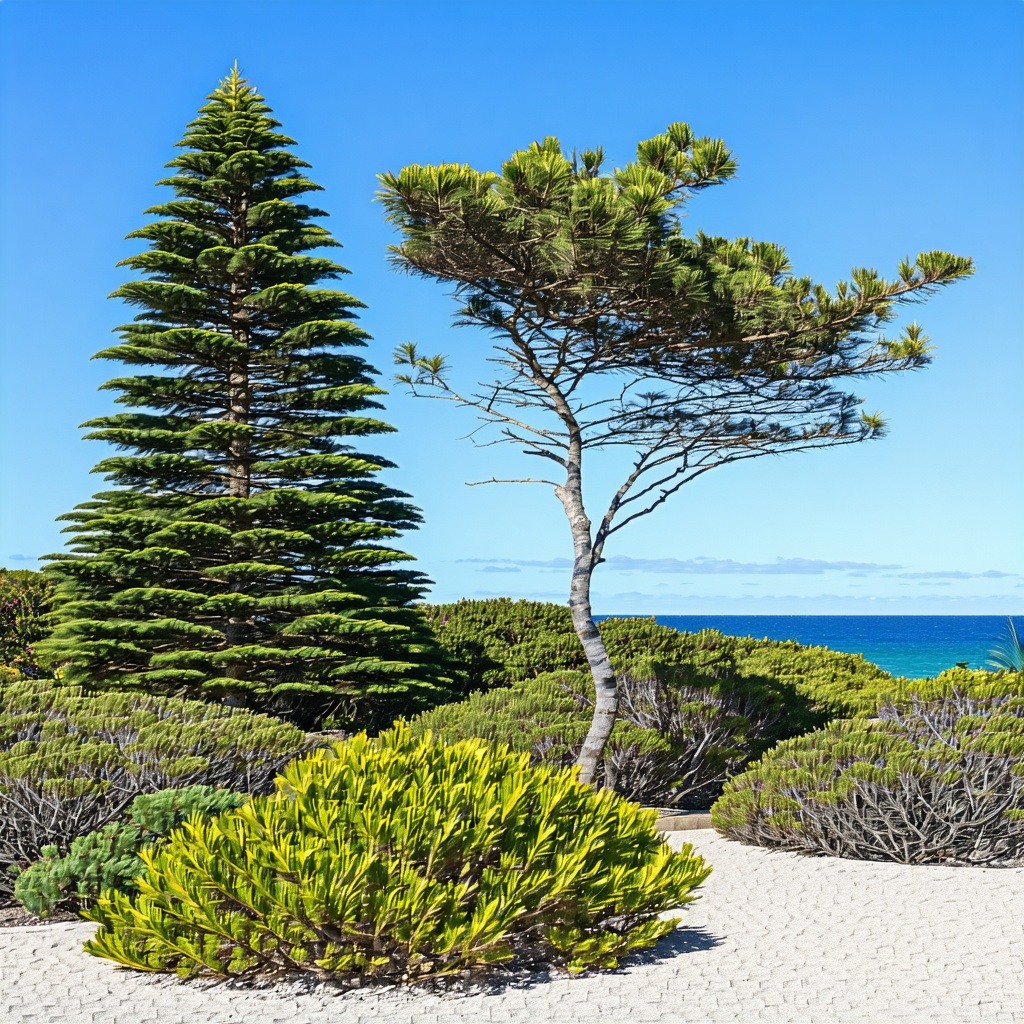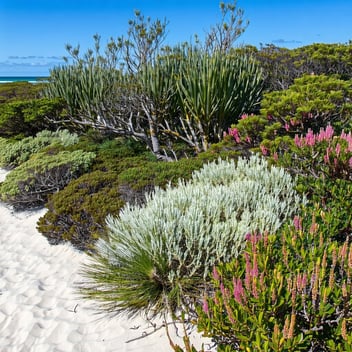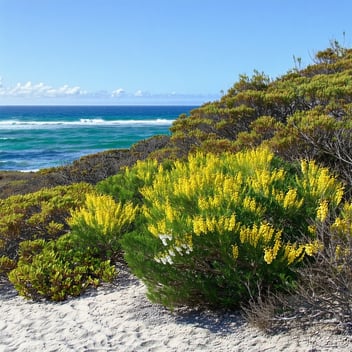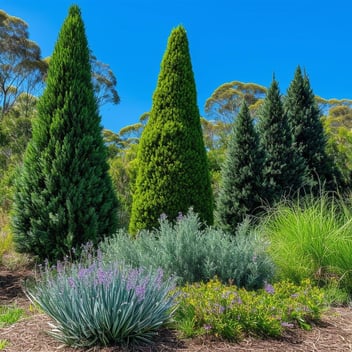The Best Conifers for Coastal Gardens in SEQ
Introduction
Coastal gardens in South East Queensland (SEQ) present unique challenges and opportunities for gardeners. The selection of appropriate plant species is crucial to ensure a thriving landscape that withstands the coastal environment's rigors. Conifers, with their diverse forms and resilience, can play a significant role in enhancing the aesthetic and functional aspects of coastal gardens.
Challenges of Coastal Gardening in SEQ
Salt-laden Winds and Soil Salinity
Coastal areas are frequently subjected to winds carrying salt, which can lead to leaf scorch and hinder plant growth. Additionally, soil salinity can affect water uptake, posing further challenges for plant health.
Sandy, Well-draining Soils
The prevalent sandy soils in coastal regions drain rapidly, often lacking essential nutrients and moisture retention capabilities necessary for many plant species.
Exposure to Strong Sunlight and Wind
Coastal gardens are typically exposed to intense sunlight and strong winds, conditions that can stress plants not adapted to such environments.
Criteria for Selecting Conifers for Coastal Gardens
Salt Tolerance
Plants must withstand salt spray and elevated soil salinity levels to thrive in coastal settings.
Wind Resistance
Structural integrity is vital for plants to endure strong coastal winds without damage.
Adaptability to Sandy Soils
The ability to grow in nutrient-poor, well-draining sandy soils is essential for plant success in coastal gardens.
Low Maintenance Requirements
Given the challenging environment, selecting plants that require minimal upkeep ensures a sustainable and manageable garden.
Top Conifers Suitable for Coastal Gardens in SEQ
Araucaria heterophylla (Norfolk Island Pine)
Aesthetic Appeal and Growth Habit
The Norfolk Island Pine is renowned for its symmetrical, pyramidal shape and horizontal branches, adding architectural interest to coastal landscapes.
Adaptability to Coastal Conditions
This species thrives in coastal environments, demonstrating tolerance to salt-laden winds and sandy soils, making it a popular choice for seaside plantings.
Callitris columellaris (Bribie Island Pine)
Native Resilience and Environmental Benefits
As a native Australian conifer, the Bribie Island Pine is well-adapted to local conditions, offering habitat benefits and blending seamlessly into the natural landscape.
Growth Characteristics
This species typically grows to a moderate height, with a conical form and fine, soft foliage, suitable for various garden sizes and styles.
Casuarina glauca (Swamp She-oak)
Soil Stabilization and Windbreak Qualities
The Swamp She-oak is effective in stabilizing sandy soils and serves as an excellent windbreak, protecting other plants from harsh coastal winds.
Suitability for Coastal Environments
Its high tolerance for salt and ability to thrive in waterlogged soils make it particularly suited for coastal gardens.
Designing with Conifers in Coastal Gardens
Creating Windbreaks and Shelterbelts
Strategically planting conifers can form natural barriers against prevailing winds, creating microclimates that support a wider range of plant species.
Incorporating as Focal Points
The distinctive forms of conifers like the Norfolk Island Pine can serve as eye-catching focal points, adding vertical interest and structure to garden designs.
Combining with Other Coastal Plants
Pairing conifers with other salt-tolerant species, such as native grasses and flowering shrubs, can enhance biodiversity and create a cohesive, resilient landscape.
Pruning and Long-term Care
Pruning Techniques
Regular pruning is essential to maintain the desired form and health of conifers in coastal gardens. Dead or diseased branches should be removed immediately, regardless of the time of year, to prevent the spread of pathogens. For shaping purposes, pruning is best conducted during the dormant season to minimize stress on the plant. It's important to avoid cutting into old wood, as many conifers do not regenerate from such cuts. Instead, focus on trimming newer growth to encourage a dense, healthy canopy.
Monitoring for Pests and Diseases
Vigilant monitoring for pests and diseases is crucial in maintaining the vitality of conifers. Common issues include aphids, spider mites, and fungal infections. Implementing integrated pest management strategies, such as encouraging natural predators and applying appropriate treatments when necessary, can effectively mitigate these problems. Regular inspections allow for early detection and prompt intervention, preserving the overall health of the garden.
Conclusion
Incorporating conifers into coastal gardens in South East Queensland offers both aesthetic and functional benefits. By selecting species well-adapted to coastal conditions, implementing thoughtful design strategies, and adhering to proper planting and maintenance practices, gardeners can create resilient and captivating landscapes that thrive in the unique coastal environment.




